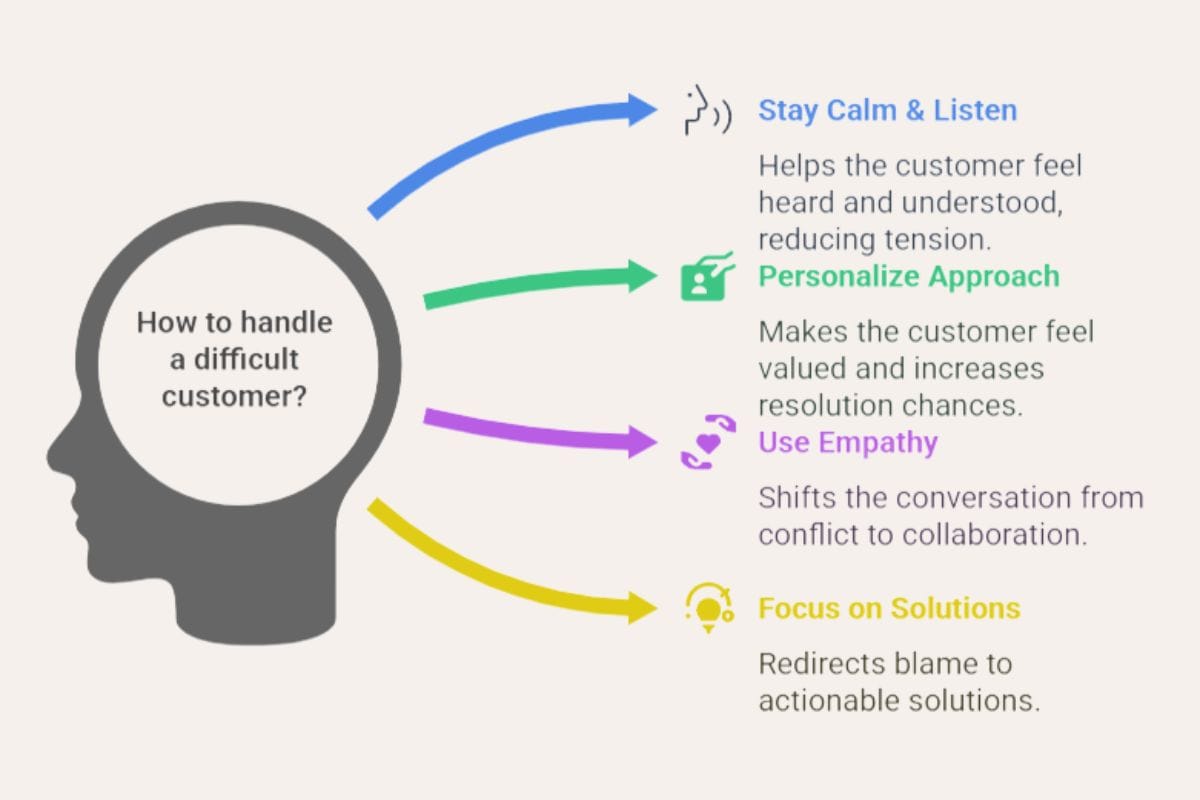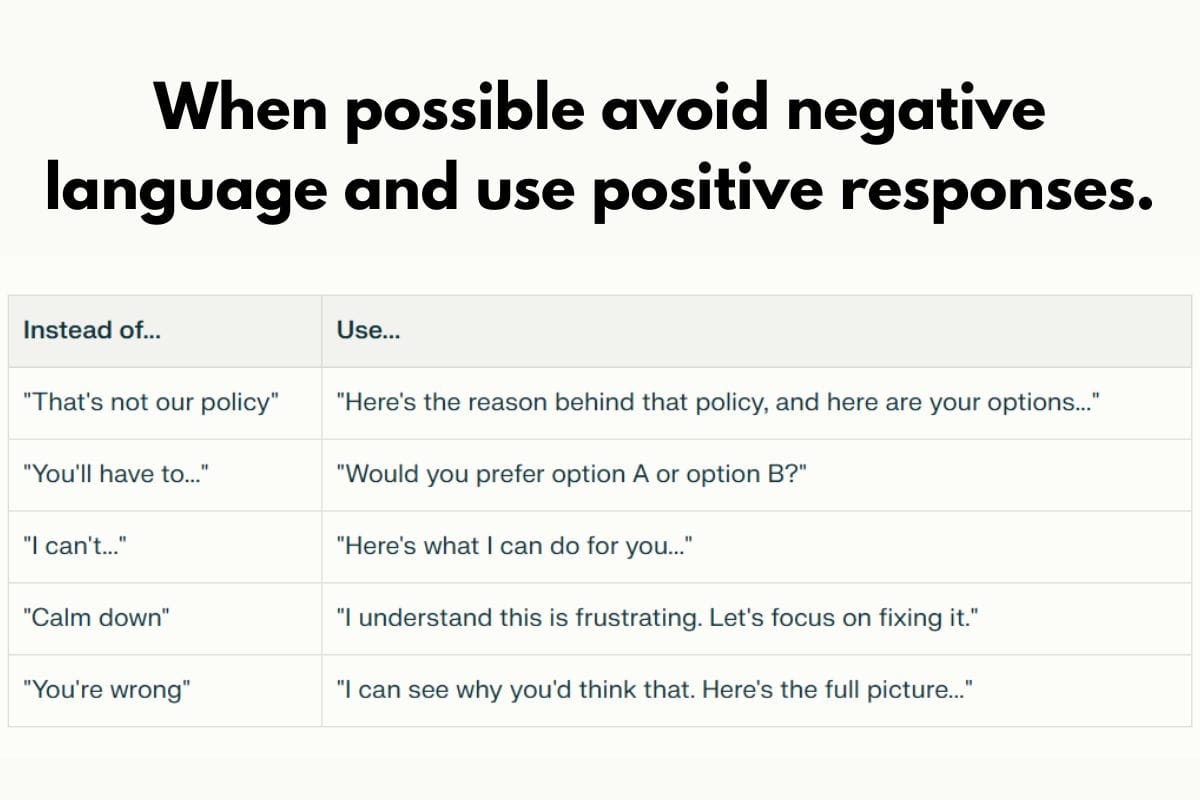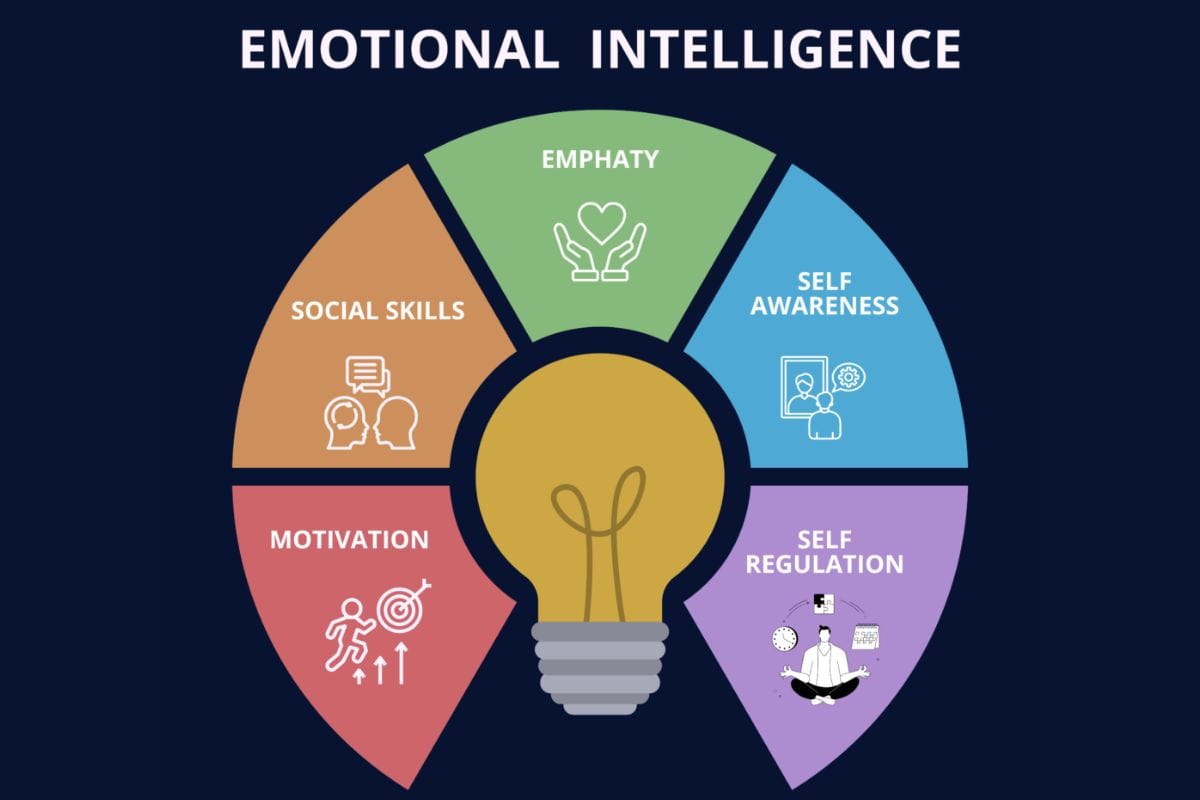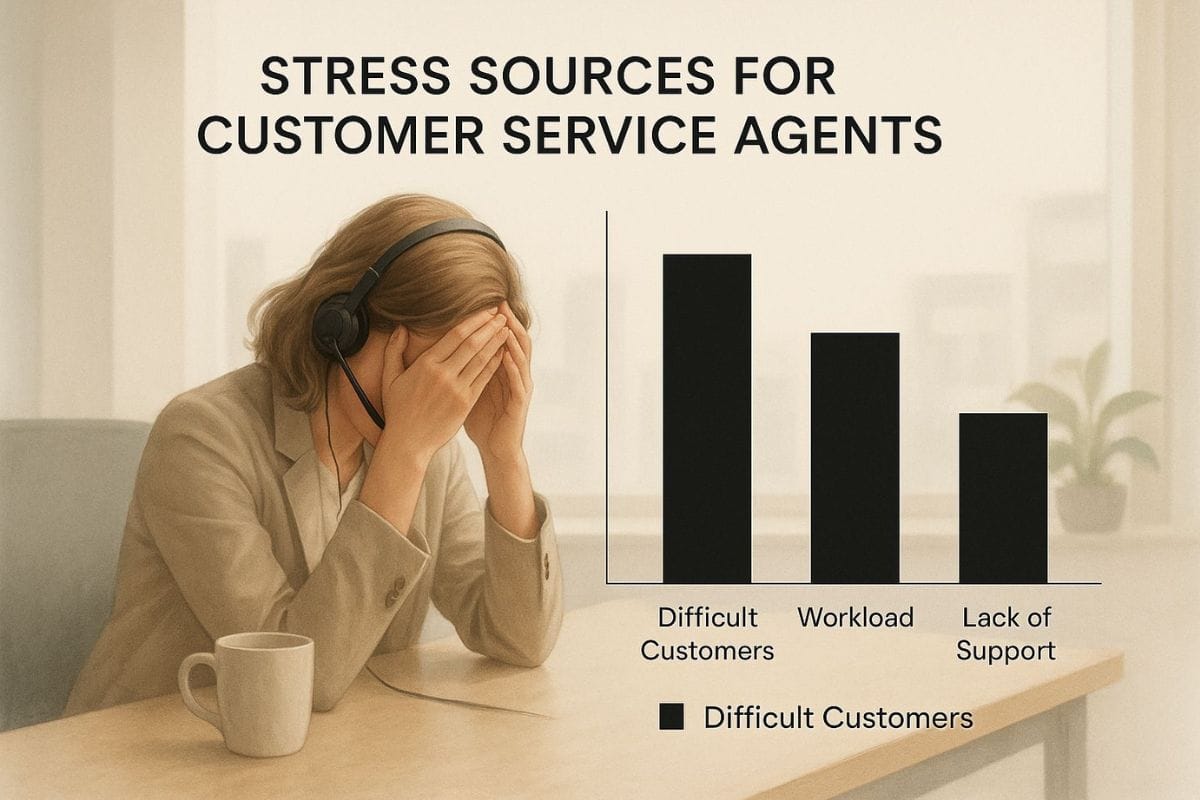Every customer service professional faces that moment when a customer’s frustration escalates and you’re navigating one of the most challenging aspects of the job. Difficult customers are inevitable, but how you handle them determines whether you lose them forever or create a brand advocate for life.
This guide explores proven scripts, de-escalation strategies, and communication techniques that transform challenging interactions into opportunities for building lasting customer loyalty. Whether managing a small team or training hundreds of representatives, these practical methods deliver measurable results across industries.
Understanding Difficult Customer Behaviour
Difficult customers rarely set out to frustrate service agents—their challenging behaviour stems from unmet expectations and genuine frustration. Understanding five primary personality types allows representatives to shift from reactive defensiveness to proactive empathy.
The Five Main Customer Types:
- Aggressive or Demanding – Quick to anger and verbally abusive, using intimidation to get their way
- Complainer – Perpetually focused on problems rather than solutions
- Confused or Indecisive – Struggles to make decisions despite clear information
- Impatient – Cannot accept limitations and becomes frustrated over unavailable features
- Know-It-All – Dominates conversations and resists input
This perspective shift is crucial: difficult customers aren’t enemies but individuals whose problems deserve genuine attention and creative solutions.
Core De-Escalation: The HEARD Method

The HEARD method provides a structured five-step framework for navigating difficult conversations:
Hear – Listen actively without interrupting. Focus entirely on understanding the customer’s perspective before formulating responses.
Empathise – Genuinely connect with the customer’s emotional state, validating their feelings as legitimate.
Assess – Thoroughly understand the situation through clarifying questions to uncover root causes rather than surface complaints.
Respond – Offer solutions diplomatically, presenting multiple options to give customers a choice and involvement.
De-escalate – Implement calming strategies through tone, language, and commitment to resolution.
Active listening alone, the foundation of this framework, can calm customers significantly. This includes hearing without judgment, using verbal acknowledgements, and rephrasing concerns back to customers to confirm clarity. When customers feel truly heard, their defensiveness naturally diminishes.
Practical Scripts for Every Situation
Opening: Acknowledging Frustration
The opening moments set the entire tone. Your initial response either de-escalates or amplifies frustration:
“I’m really sorry to hear about your experience. I can understand how frustrating this must be for you. Let’s work together to get this sorted out as quickly as possible.”
Alternative empathy statements:
- “I can hear how frustrating this has been for you.”
- “I completely understand why you’d be upset—let’s see what we can do.”
- “Thanks for sharing that. I would feel the same way if I were in your shoes.”
Handling Anger
When customers display anger, acknowledge frustration while maintaining control:
“I get why you’re upset—that’s totally understandable. Let’s figure this out together and get it fixed right away.”
Alternative approaches:
- “I can see how this would be frustrating. Let me take a look and see how we can make it right.”
- “I know this is frustrating, and I want to make sure we fix it for you. Let’s work together.”

Setting Boundaries
When customers cross behavioural lines:
“I want to help, but I need us to keep this conversation respectful.”
Additional boundary scripts:
- “I cannot continue this conversation if disrespectful language is used.”
- “I’m dedicated to helping, but I require respectful dialogue.”
- “Let’s focus on resolving the issue without using offensive language.”
Refund Requests
When approving:
“We appreciate your communication about this issue. After careful consideration, we’ve decided to grant you a full refund of [amount], processed within [timeline].”
When unable to approve but offering alternatives:
“Unfortunately, that falls outside our refund window. However, because we value your business, I’d like to offer you a 15% discount on your next order. Would that help make this right?”
Managing Wait Times
- “Thanks for your patience—I know your time is important.”
- “I understand it’s frustrating to be kept waiting. The good news is, I already have answers for you.”
- “I appreciate you hanging in there. This is almost resolved.”
De-Escalation Language Framework
Words That Work
Positive language maintains customer hope and demonstrates commitment:
- “I can help with that.”
- “Here’s what we can do.”
- “Let me see what options are available.”
- “I’m happy to assist you.”
Language to Avoid

Avoiding blame-focused language keeps conversations solution-focused and prevents escalation.
Managing Different Customer Types
The Aggressive Customer – Responds to calm confidence and clear boundaries. Apologize for the problem itself and ask them to state their desired resolution:
“I understand you’re upset. What would be the best resolution for this situation?”
The Complainer – Requires validation without accepting blame. Acknowledge frustration, listen actively, ask clarifying questions, and present realistic options.
The Indecisive Customer – Needs clear guidance without pressure. Use simple language, avoid technical jargon, and present decision-making frameworks.
The Know-It-All – Listen for what they truly need beneath their assertions. Gently but firmly communicate what’s realistic and focus on solutions they’ll accept.
Emotional Intelligence: The Game-Changer

Emotional intelligence encompasses five dimensions crucial for customer service:
- Self-Awareness – Notice your triggers and emotional responses
- Self-Regulation – Stay calm when customers are upset
- Empathy – Genuinely understand their perspective
- Motivation – Stay focused on helping despite difficulty
- Social Skills – Guide respectful conversations and de-escalate tension
Organizations emphasizing empathy achieve higher First Call Resolution (FCR) rates and customer satisfaction scores. When agents respond to both emotion and issue, satisfaction and loyalty rise significantly.
Building emotional intelligence:
- Role-playing real-life scenarios
- AI-powered call analytics revealing emotional patterns
- Mindfulness and breathing exercises for stress management
- Coaching focused on self-regulation techniques
Escalation: When and How
Red Flags Requiring Escalation
- Customer becomes verbally aggressive or uses profanity
- Issue exceeds agent authority
- Initial efforts have not resolved the problem
- Customer makes threats or displays abusive behavior
- Issue requires specialized expertise
Always escalate smoothly with complete context about the situation and previous resolution attempts.
Setting Clear Boundaries
Setting boundaries maintains control and ensures positive outcomes:
- “I want to help, but I need us to keep this conversation respectful.”
- “I understand your frustration, but I cannot tolerate disrespectful conduct.”
Representatives should never accept verbal abuse—this damages employee well-being and sets unhealthy precedents.
First Contact Resolution and Follow-Up
Achieving FCR
First Contact Resolution prevents repeat contacts that compound customer frustration. Strategies include:
- Deep product knowledge enabling efficient problem-solving
- Complete customer history access
- Cross-functional real-time collaboration
- AI-powered guidance systems
- Breaking complex issues into manageable parts
- Confirming resolution before ending conversations
The Post-Resolution Phase
Research shows 70% of customers appreciate follow-up messages after resolution. Follow up within 24-48 hours to confirm satisfaction and check for additional issues. This transforms negative experiences into loyalty-building moments.
The Service Recovery Paradox – Customers whose complaints are handled well often become more loyal than those who never experienced problems. When concerns are taken seriously and resolved fairly, trust deepens significantly, increasing lifetime value.
Preventing Agent Burnout

Customer service agents face significant stress handling difficult customers. Early intervention matters when recognizing warning signs: increased absenteeism, emotional exhaustion, decreased empathy, and reduced productivity.
Protective strategies:
- Rotate responsibilities regularly to prevent monotony
- Ensure adequate staffing during peak seasons
- Use AI to handle routine inquiries
- Encourage frequent breaks and flexible scheduling
- Provide comprehensive wellness and mental health support
- Implement real-time coaching during challenging interactions
- Create recognition programs highlighting achievements
- Foster supportive team environments
Organizations prioritizing agent well-being see improvements in customer satisfaction, employee retention, and engagement.
Handling difficult customers effectively requires genuine empathy, clear communication, emotional intelligence, and strategic problem-solving. The fundamental truth: difficult customers aren’t enemies but individuals whose unmet needs created frustration.
By implementing the HEARD method, using appropriate scripts, training in emotional intelligence, and establishing clear protocols, organisations transform challenging interactions into opportunities for loyalty building. Success lies in making customers feel heard, offering practical solutions within realistic boundaries, and maintaining composure regardless of behaviour.


